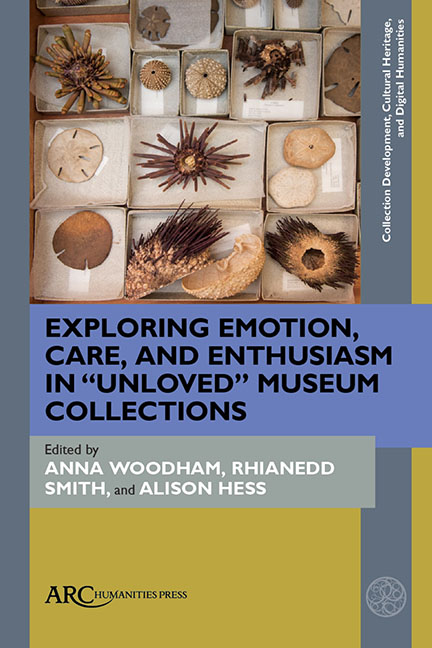Chapter 4 - “Storehouses of Unimagined Treasures”: Delightful Rummaging and Artists’ Responses to “Unloved” Collections
Published online by Cambridge University Press: 20 November 2020
Summary
Introduction
If you are squeamish
do not poke among the beach rubble.
This fragment of poetry by Sappho begins DeSilvey's paper, “Observed Decay: Telling Stories with Mutable Things,” in which the author talks about decay as “a process that can be generative of a different kind of knowledge.” Here, using the same poem to frame the chapter, I explore another “different kind of knowledge,” generated not through the literal decay of objects but through what happens when artists and others are invited in to “poke among the beach rubble.” This may include actually accessing the hidden depths of museum storage and their often-forgotten collections, getting up close and personal with the stuff of the storerooms through touch, or imagining and making new things in response. All of this, I argue, is about an encounter with objects that is primarily an emotional or affective one, one without “prerequisite of information” yet where sensory encounter, particularly touch, can elicit an immediate and visceral response. Touch directly links audiences and/ or artists with the objects’ histories and contexts, their original makers or owners, and their material embodiment, not least through a connection of hands revealed by fingerprints, patina, or marks of wear and tear. In addition, building on work exploring artists’ interventions in museums and on activist projects such as that of artist Fred Wilson in his Mining the Museum exhibition, this chapter examines such artistic interventions and engagements particularly in relation to stored or hidden collections rather than displayed ones. These interventions provide important sources of interpreting collections, and thus they generate “a different kind of knowledge” that prioritizes an initial emotional “gut response.” This, I argue, has the potential to shape museum methods and practices both behind the scenes and within exhibitions.
A small but growing body of work is focused on museum storage areas as sites for museological research. Geoghegan and Hess note that “despite their invisibility to the public, stored objects and their stubborn physicality are at the heart of what defines a museum.” Brusius and Singh ask in their edited volume: “why is it that, when most museum objects lie in storage, it is the gallery and the exhibition that have come to take such an important place in both the self-representation of museums and the public's perception of these institutions?”
- Type
- Chapter
- Information
- Publisher: Amsterdam University PressPrint publication year: 2020

